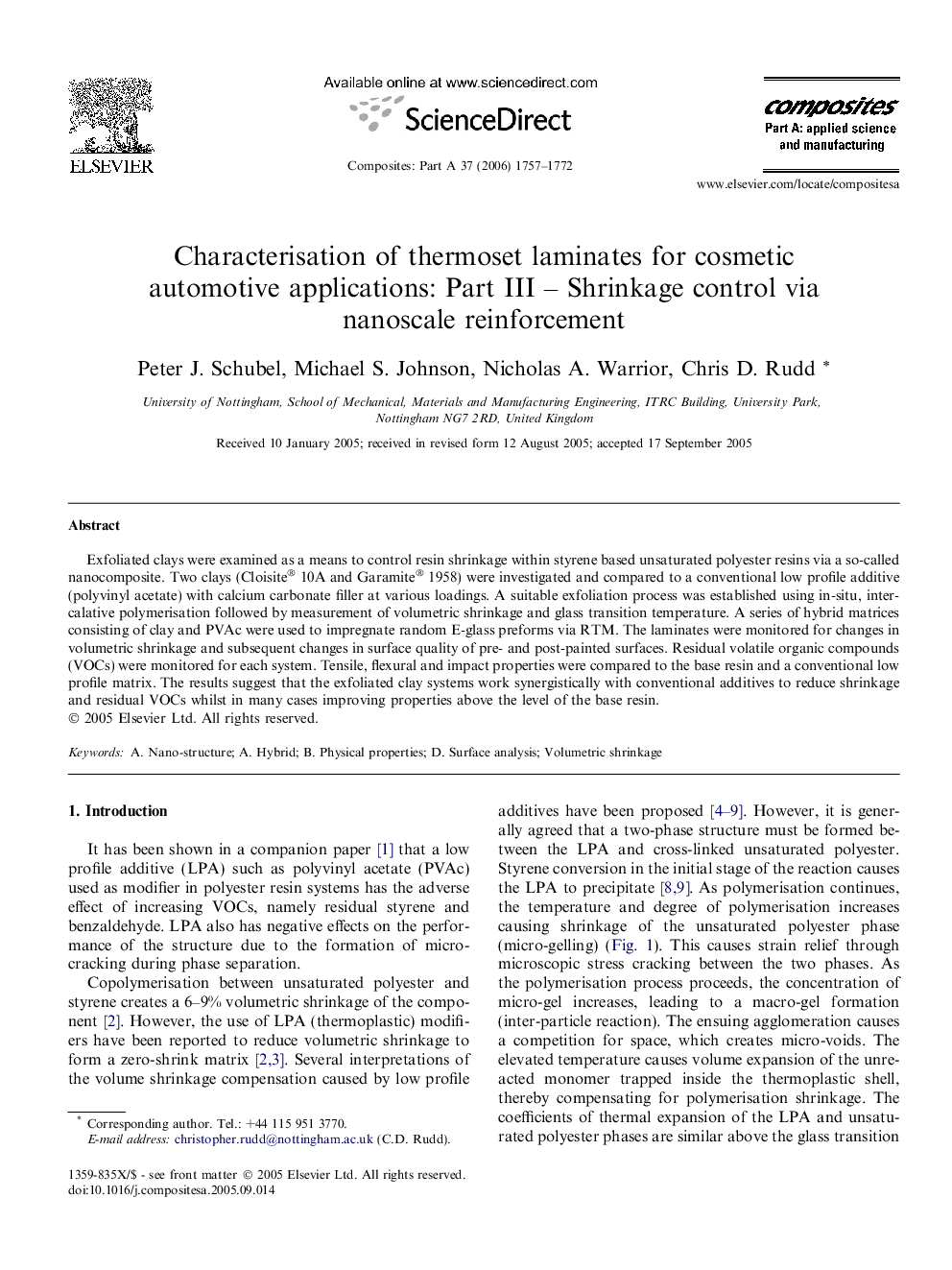| Article ID | Journal | Published Year | Pages | File Type |
|---|---|---|---|---|
| 1468222 | Composites Part A: Applied Science and Manufacturing | 2006 | 16 Pages |
Exfoliated clays were examined as a means to control resin shrinkage within styrene based unsaturated polyester resins via a so-called nanocomposite. Two clays (Cloisite® 10A and Garamite® 1958) were investigated and compared to a conventional low profile additive (polyvinyl acetate) with calcium carbonate filler at various loadings. A suitable exfoliation process was established using in-situ, intercalative polymerisation followed by measurement of volumetric shrinkage and glass transition temperature. A series of hybrid matrices consisting of clay and PVAc were used to impregnate random E-glass preforms via RTM. The laminates were monitored for changes in volumetric shrinkage and subsequent changes in surface quality of pre- and post-painted surfaces. Residual volatile organic compounds (VOCs) were monitored for each system. Tensile, flexural and impact properties were compared to the base resin and a conventional low profile matrix. The results suggest that the exfoliated clay systems work synergistically with conventional additives to reduce shrinkage and residual VOCs whilst in many cases improving properties above the level of the base resin.
